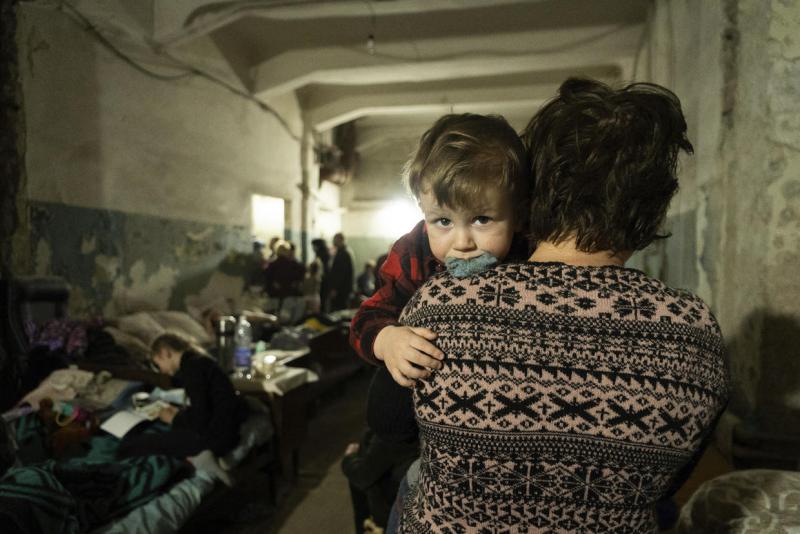Historical Essays, Reviews
20 days in Mariupol
On February 20, 2022, the siege of Mariupol began. The Russian Armed Forces, alongside the Donetsk People’s Republic Militia, battled with the Ukrainian Armed Forces for control the city in southeastern Ukraine for three months. On May 20, the remaining defenders surrendered to Russian forces at the Azovstal Iron and Steel Works factory. When I traveled to Kyiv and several recently liberated areas in September 2022, enormous banners hung everywhere with the slogan: “Azovstal: Free Mariupol Defenders.”
In the West, with the exception of the Ukrainian diaspora, the war has become primarily an ideological conflict rather than a human one. Historical opinions about Putin, NATO, and Ukrainian sovereignty have been hastily produced by pundits who couldn’t name a Ukrainian or Russian city days before the war broke out. Belligerently ignorant commentators like Candace Owens—who has very rightly noted that she knows nothing about foreign policy—are a key source of information about the war for millions of people.
Conservative friends in Ukraine have been heartbroken to see their people demonized and the invasion justified by commentators they once thought to be ideological fellow-travelers; the “fogs of culture war,” as I wrote then, have obscured much of what is going on. It is one thing to believe that a negotiated peace is best for all parties; it is quite another to insist that documented war crimes are a hoax or that Vladimir Putin is a much-maligned defender of Christianity who is merely misunderstood for lack of proper press attention.
Anyone interested in getting a sense of what the Russian invasion has been like for the Ukrainian people should take the time to watch 2023 documentary 20 Days in Mariupol, an extraordinary film that documents the first several weeks of the conflict.
What makes 20 Days in Mariupol particularly powerful is that there is no coherent narrative to it. It is simply a day-by-day account of what it is like to live through war. The grief in this film is physically painful to watch. Doctors and nurses frantically try to resuscitate an 18-month-old toddler; his mother disintegrates when they finally give up and stop pumping his tiny chest. The camera cuts away from her sobs; we see a little white foot protruding from the stretcher. There is nothing particularly significant about this death. It is simply what happens when shells fall.
Another boy, this one 16-years-old, had his legs blown off by an artillery strike while playing soccer with his friends. There is blood everywhere. His father’s voice when they tell him that they’ve lost him is agony, and he cradles the bump under the black plastic. Pregnant women arrive on stretchers borne by hoarse-voiced paramedics. Some die with their unborn babies. The hospital sustains direct hits. Eventually, the body-bagged dead are buried in long, deep trenches. Some of the bags are very small. For those who believe this is fictitious, I note that I visited hospitals in Ukraine that had been shelled by the Russians, including one that had taken a direct hit to the cardiology unit.
The documentarians are faithful in what they portray, and not all of it reflects well on the city’s residents. A middle-aged woman breaks down in tears, hysterically shouting at neighbors who loot her store as the rule of law breaks down. Soldiers arrive at the scene and swear at the thieves: What are you doing? This is your home! Shells hit apartment buildings; looters rob their neighbors; men and women stare, stunned, at the gaps of rubble where their homes used to stand. Eventually, thousands of them get into whatever vehicles have survived the Russian pounding and try to leave.
One middle-aged man named Alexander is pulling a cart with a few surviving possessions. The filmmaker asks him why he has been walking for four hours despite all the shooting. He responds: “Well, I’m walking, and they’re shooting. What are you going to do?” He asks a thickset Ukrainian unloading the plastic-wrapped bodies of teens and children from a truck to add to the mass grave how he feels. He pauses, starts, stops. “I don’t know who started this,” he says finally. “But let them all be damned.”
The only war documentary I can think of that compares to 20 Days in Mariupol is For Sama (2019), a mother’s first-hand account of life with her doctor husband and little girl in a hospital during the Syrian civil war. Neither film is making any political point; neither is advancing a specific agenda or laying out a roadmap for war or peace. Both simply document the reality of life for ordinary people during the mundane insanity of war, in which senseless death and indiscriminate destruction become a fact of life. In the din of the fierce debates about the war, we should try to remember those enduring it.








